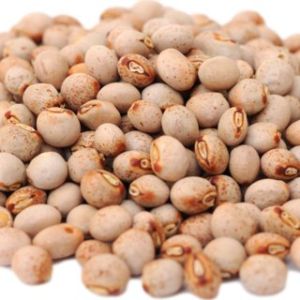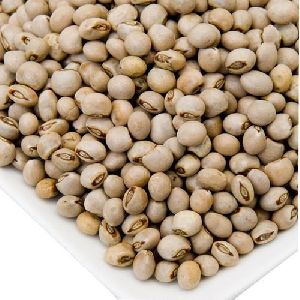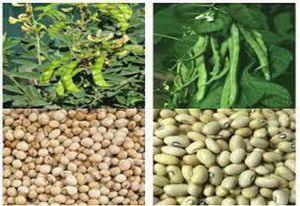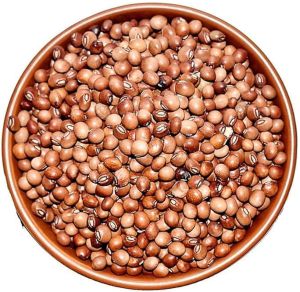
Pigeon Peas
60 - 100 Per Kilogram
50 Kilogram (MOQ)

Imported Pigeon Peas
80 - 81 Per Kilogram
10 Tons (MOQ)
We are leading in Import & Export Trades specializing in Agri Products providing high-quality produce. Globally sourcing and procurement of Agri products.
Best Deals from Pigeon Pea Seeds

Research Arhar Seed
550 Per Pack
5000 Pack (MOQ)
Research Arhar Seed At JMJP Global Trade, we deal in the top quality Arhar (Toor) seeds, recognized for their rich food value and health advantages. Research Arhar seeds are a staple in several cuisines, mainly in India, and are widely used to prepare soups, dals, and stews. Packed with fiber, protein, and important vitamins, these seeds endorse for better health, support digestion, and support generally well-being. Our Arhar seeds are sourced from reliable farms and experience stringent quality checks to ensure purity and freshness. Whether for culinary or agricultural purposes, JMJP Global Trade provides research Arhar seeds that meet global quality standards.

Pigeon Pea
15 - 18 Per Kilogram
10 Ton (MOQ)
The pigeon pea (Cajanus cajan) is a perennial legume from the family Fabaceae native to the Eastern Hemisphere. The pigeon pea is widely cultivated in ...

pigeon pea seeds
Get Price Quote

Pigeon Peas
Get Price Quote
50 Metric Ton (MOQ)

Pigeon Peas
7,900 Per Quintal
25 Metric Ton (MOQ)

Organic Pigeon Peas
Get Price Quote
5 Metric Ton (MOQ)

Pigeon Pea
70 - 80 Per Kilogram
3 Ton (MOQ)

Pigeon pea yellow
Get Price Quote
dodonPulses or legumes are an integral part of Indian cooking, which forms a key component of a wholesome meal plan. Dal, the storehouse of good quality plant protein replete with a ton of health benefitting properties. One such dal that abounds with an extremely rich nutrient profile is toor dal or arhar dal.It is a staple food among several cultures and cuisines all through the length and breadth of India that also serves as a nutritious vegetarian meat alternative. Be it dal chawal or sambar sadam or rice with pappu, toor dal is the quintessential ingredient and undeniably the most relished culinary delight. Mainly for vegetarians’ toor dal is an incredible source of proteins, carbs and other vital nutrients needed for normal growth, development and tissue repair. Pigeon peas are called by many vernacular names in the regional languages of India as Toor dal or arhar dal or rahri dal in Hindi, thogari bele in Kannada, Tur in Bengali, Turi or Toor in Marathi, Turdalya or tuvar in Gujarati or kandulu or kandi pappu in Telugu or thuvaram paruppu in Tamil and thuvara parippa in Malayalam. Each state in India has its unique way of using the hearty dal in a spectrum of ways. Toor dal with a mild flavour melds well with any ingredient and flavour, which is commonly used in making dal, sambar, rasam, soups, dal halwa, paruppu vada to mention a few. Also Read: Toor /Arhar Dal: 5 Nutritional Reasons On Why You Should Eat This Protein Rich Legume Daily Toor Dal/Pigeon Pea Plant Toor dal is a perennial legume that belongs to the Fabaceae family, which is also known as pigeon pea or split pigeon pea, arhar dal or red gram dal. Tracing its root to the Indian subcontinent at least 3500 years ago, this lentil had been the main food in Asia, Africa and Latin America. Toor dal is widely grown in tropical and semitropical regions across the world, India accounts for 72% of major production of pigeon pea in an area covering 3.9 million hectares. It is a drought-resistant plant and can be cultivated in regions with minimal rainfall. Toor dal is cultivated solely as a crop or merged with cereals such as sorghum, pearl millet or maize or with other legumes such as peanuts. Pigeon pea is capable of symbiosis with Rhizobia, the bacteria linked with toor dal nurtures soils through symbiotic nitrogen fixation. The seed pods look flat, sickle-shaped with a length of 5-9 cm, each pod comprises 3-9 seeds that range from white, cream, yellow, purple or a combination of any of these shades. Pigeon pea grows to a height of 0.5- 4.0 m, the crop usually survives for three to five years, though the yield falls considerably after the first two years. Processing Of Toor Dal Dehulling Methods Dehulling of lentils is an age-old practice in India, where hand pounding was common. Some of the other traditional methods of processing toor dal are classified under two categories: Wet Method The wet method comprises soaking seeds in water, then it is sun-dried and dehulled. Dry Method This method involves applying oil and water on the seeds, then drying in the sun and dehulling. Large quantities of pigeon peas are commercially dehulled where the lentils are deskinned and split in mechanically functioning mills. Ayurveda Uses The holistic science of ayurveda values toor dal as an amazing food and medicinal legume in treating several health woes. Right from the seeds, young fresh pods, shoot and leaves are widely used for culinary purposes. In traditional practice, toor dal is used internally in the form of healing soup and externally it is applied as a paste or ointment. This lentil is good for boosting liver health and brings about lightness in the body. The leaves are used to treat bleeding disorder, worm infestation and also acts as a natural laxative. The paste of red gram leaves is applied over mouth ulcers and inflammation to heal stomatitis.

Pinky Red Gram Seeds
Get Price Quote
1 Ton (MOQ)

Research and OP Pigeon Pea Seeds
Get Price Quote
5 Ton (MOQ)

pigeon pea seeds
40 - 70 Per Kilogram
1000 Kilogram (MOQ)

pigeon pea seeds
Get Price Quote
100 Kilogram (MOQ)

Pigeon Peas
Get Price Quote
Well-established name in the domain, you can count on us for presenting extensive array of Pigeon Peas. We are based in India and we have carved a niche for ourselves in the market by offering quality products.

Split Pigeon Peas
Get Price Quote
500 Kilogram (MOQ)

Pigeon Peas
Get Price Quote
2 Ton (MOQ)

Red Gram Seeds
150 Per Kilogram
50000 Kilogram (MOQ)

whole pigeon peas
70 - 120 Per Kilogram
2 Container (MOQ)

Pigeon Pea
Get Price Quote
25 Quintal (MOQ)